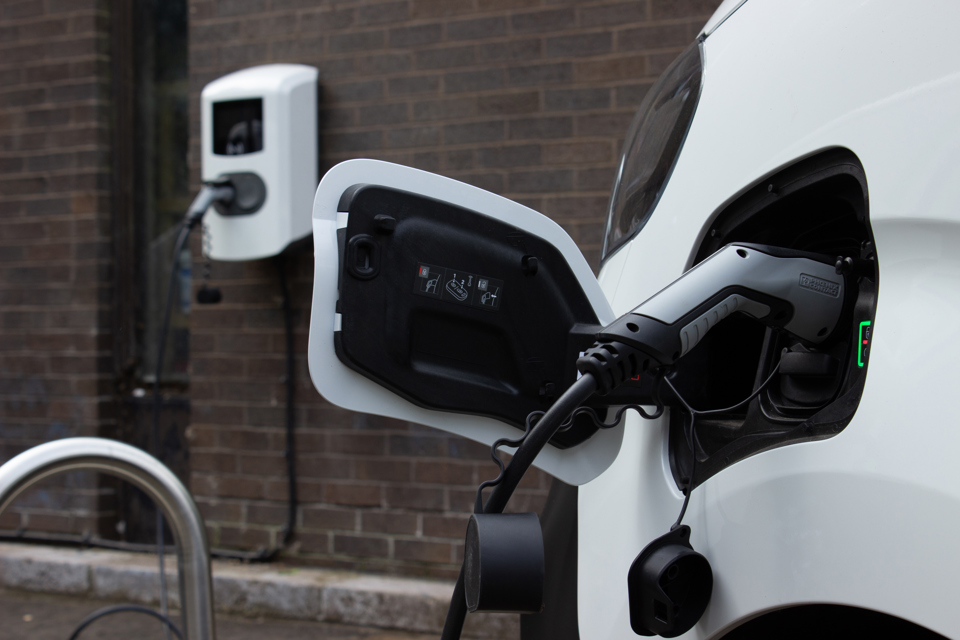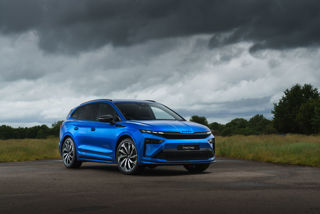The transition to electric vehicles is at the top of the agenda for almost all fleet decision-makers at the moment.
But while there are many benefits to moving to the zero-emission technology, there are still many challenges to overcome.
The experiences of some of the country’s leading fleet decision-makers were shared during a panel debate at the BVRLA’s Fleets in Charge conference, covering topics including charging infrastructure, range, reliability, benefits and how the leasing and rental industries can help the transition.
What is the biggest challenge you are facing in electrifying your van fleet?
Lorna McAtear, head of fleet at National Grid: The infrastructure is there in for the amount of EVs we have at the moment - this isn’t to say the public network doesn’t need to keep growing, and it will keep growing – but there is an issue with space around the chargers.
I took part in the EV Rally in July where I took some commercial vehicles around the country and over the five days I only queued at a charger once, but if I was towing anything I would have struggled.
Matthew Hammond, head of fleet at Altrad UK: I think infrastructure is a problem. When the charge points are put in, they’re not thinking about access for commercial vehicles and that really does need to be considered.
The transition to electric vehicles is at the top of the agenda for almost all fleet decision-makers at the moment.
But while there are many benefits to moving to the zero-emission technology, there are still many challenges to overcome.
The experiences of some of the country’s leading fleet decision-makers were shared during a panel debate at the BVRLA’s Fleets in Charge conference, covering topics including charging infrastructure, range, reliability, benefits and how the leasing and rental industries can help the transition.
What is the biggest challenge you are facing in electrifying your van fleet?
Lorna McAtear, head of fleet at National Grid: The infrastructure is there in for the amount of EVs we have at the moment - this isn’t to say the public network doesn’t need to keep growing, and it will keep growing – but there is an issue with space around the chargers.
I took part in the EV Rally in July where I took some commercial vehicles around the country and over the five days I only queued at a charger once, but if I was towing anything I would have struggled.
Matthew Hammond, head of fleet at Altrad UK: I think infrastructure is a problem. When the charge points are put in, they’re not thinking about access for commercial vehicles and that really does need to be considered.
We are not as structured in terms of the deployment as other countries in Europe, either. We need a Government plan in place which people have to adhere to.
Rob Simister, director – fleet operations at Centrica: We operate across the whole of the UK and the public infrastructure in the more urban areas is a lot better than it is in some of the lesser populated areas.
But if you have a depot or an area to store your vans overnight where you can charge them, it’s a lot less challenging.
If you have to take the van home to charge, then it has to take up a driveway space. So where do you put your personal car? Does that affect your insurance because you may be insured to park on your drive? What if you’ve got other electric cars? Will it be the work vehicle which will gets charged, or is it the car that is used to take the children to school in the morning?
Our biggest challenge with electric commercial vehicles is productivity. If you cannot charge the vehicle overnight then you’re introducing additional downtime which, if you run a business, costs money.
Colin Hutt, fleet manager at Clarion Response: As a fleet manager, I’m stuck in the middle a little bit. On one side I’ve got our sustainability team wanting to cut carbon and manufacturers pushing EVs at me.
On the other, I’ve operations saying they can’t have them because they stop them doing their work as effectively, and finance telling me they are too expensive.
Is the range of electric vans proving an issue?
Colin Hutt: We took on our EVs in the summer and it wasn’t until the winter came when we had problems around range, which led to some pushback from our drivers on the vehicles.
We went for vans with a smaller battery so we could have a bigger payload, but in hindsight we probably should have gone for a bigger battery and smaller payload.
But we’ve learned some lessons from the things we’ve done wrong. For example, driver communication is important. When we got our first EVs we left the handover to the likes of the manufacturers.
We probably should have done those ourselves because we got drivers wondering about the range and other bits and pieces like being in sport mode all the time. Just a simple bit of training could stop that kind of thing.
Rob Simister: WLTP range should be ignored. We do our own range testing. We have a bunded tank filled with water that we put in the back of vans and run them in all weathers for a period of time.
That tank weighs about the same as our usual load; we carry nearly a tonne of gear on most of our LCVs.
We tried the largest battery product from the Stellantis Group, for example. It has a WLTP range of 207 miles, but in our hands, fully-loaded in cold weather, we’ll do around 120 miles. It’s the same for any product with a similar battery size.
Our real-world range figures are what we build our business model around.
Matt Hammond: You do wonder why we get hung up about WLTP. Nobody believed the official mpg figures before, so why did we suddenly believe WLTP for electric vehicles was right?
Towing or having a load on the back can have a massive impact so you’ve got to use the worst-case scenario to plan from.
You’ve got to kind of ignore what’s on paper. Do your own research. Talk to other fleets who have done it and listen to them. Those guys have got the data you need.
Lorna McAtear: We have so much tech in these vehicles now that the 12-volt battery can’t handle it overnight. The ‘vampire’ drain that happens when the vehicle isn’t being used really does suck energy out of the battery – if you go on holiday for two weeks you come back to a dead vehicle.
A vehicle that doesn’t operate is a cost to us as a business, so although some OEMs are great, others have to be better. So I would say to them please get your act together and fix this for us because it’s costing me money.
Rob Simister: The 12-volt battery issue is made worse because the battery itself has been despecced because it’s not now needed to turn over a diesel engine.
Lorna McAtear: Different manufacturers have written software that allows the 12-volt battery to charge when the main battery is charging as well, others haven’t.
Others wait until the traction battery gets to 100%, but we’re told not to charge the battery to completely full to protect its health. It’s just flaws in the design. We just need to be honest and open a little bit more with some of these challenges so they can be fixed.
What benefits has your fleet seen through the transition to EVs?
Lorna McAtear. We’ve had an uptick in well-being because they drive better. We’ve also had less incidents in those vehicles.
Matt Hammond: There’s definitely been a feelgood factor returning with the car fleet. Until EVs came along, it had been a bit flat for about seven or eight years.
You were just churning the same numbers, trying to squeeze your CO2 numbers down and screw manufacturers down to better terms.
Suddenly that flipped and there’s more of a buzz. The drivers had lost interest and the younger ones in particular weren’t that bothered, they just bought a car.
Now they know what’s going on. They know about the tech. They want to understand what it’s all about. There really is that buzz around it.
It’s definitely lifting the industry and made everybody more passionate and understanding about what we’re doing.
From a fleet management viewpoint, suddenly you’ve gone from being the guy down the bottom of the corridor nobody ever wants to go and see, to being the busiest office in the building.
Not only have you got all the drivers wanting to talk to you, you’ve got the ESG guy standing outside your door, you’ve got the FD standing outside your door. It’s great – you’re a man in demand.
Rob Simister: One of our big focuses is the reduction of downtime. Because our guys deal with gas and electric, our vans are often sitting in car parks while they’re receiving training.
We decided to do mobile servicing during this time, while the downtime has effectively been booked.
We roll in, do servicing, change tyres and all sorts of stuff because EVs are really quick and easy to maintain: an EV service is about 30 minutes and a chammy and that’s about it. That’s a big advantage compared to a diesel van.
Colin Hutt: Almost to a man everyone loves driving the electric vans. From my experience they seem to have fewer issues in terms of service and maintenance, particularly in and around London; you don’t get DPF issues, for example.
What do you need from the leasing and rental industry to help your transition to electric vans?
Colin Hutt: It’s a big commitment to sign a contract for five years for an electric van because you are not sure it is going to work for you, so more flexible leasing to allow us to choose the solution. Something so we are not tied into those vehicles for so long would be great.
Matt Hammond: There’s merit in having access to short-term vehicles. Sometimes you think you know what the answers are because you know how it is for a diesel 3.5-tonne dropside, for example, but it might be different with an EV.
Access to those vehicles for maybe six or 12 months would be really useful so you can understand how it actually functions.
Historically we’ve all been forced to take longer leases out and maybe that’s not what we need right now.
There’s a lot of change and a lot of new vehicles, and we need the flexibility and the understanding from the leasing companies that this is probably what the industry needs right now.
Login to continue reading.
This article is premium content. To view, please register for free or sign in to read it.























martinwinlow - 05/08/2024 12:59
A five year lease on *any* EV at the moment is bonkers. It's like being stuck with the same smartphone for 5 years. The technology (and prices) are *so* fast-changing compared to the ICEV fleet that 3 years would be an absolute maximum lease term in my book, preferably 2 years. This is especially true for a much narrower van market segment (narrower in the context of model availability).